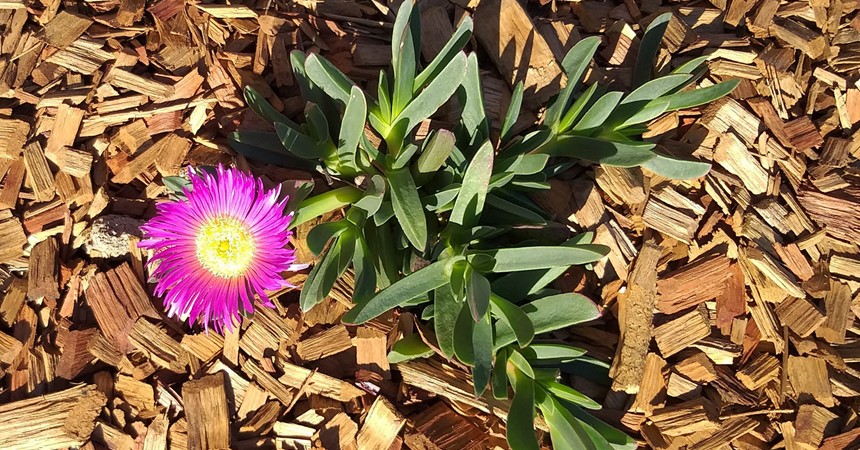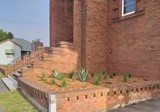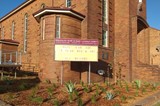Earlier this year, Saint Benedict’s Inner Newcastle Parish decided to install an access ramp at its Tighes Hill church. Due to the slope of the land, the ramp is long, and at its highest point the handrails are 2.5 meters above the ground. Newcastle City Council was concerned about the visual impact of the ramp and insisted on landscaping to soften its impact.
“Newcastle City Council did us a favour when it made landscaping a condition of its approval for the access ramp,” said Inner Newcastle Parishioner, Lawrie Hallinan. “It made us consider the importance of the garden and gave us a project that helped build our community.”
The initial step was getting a local horticulturalist to design three options. The brief was that the garden needed to be low-maintenance, drought-tolerant and beautiful. The Tighes Hill Catholic community then decided upon the native trees and grasses garden rather than the Mediterranean or coastal-themed options. There was considerable interest generated by the colourful landscape design drawings.
The community held a working bee but soon realised the site preparation was beyond their physical capabilities. To pay for others to help with the garden the community started fundraising with raffles and plant sponsorship.
Now the garden is planted, neighbours often stop and comment on the tremendous improvement it has made to the look of the church and the streetscape. As the plants grow to their full form, the garden will further meet that most important design brief that it be beautiful.
For thousands of years, the church has spent considerable time and resources making its buildings and their interiors, art, vessels, and vestments beautiful. Pope Francis’s 2015 encyclical Laudato si’ has focused church theology and spirituality on the often-overlooked value of the natural environment. In a “Laudato si’” church the garden surrounding the building should been seen as equally important as an “icon” of, and point of encounter with, God.
What is more, Saint Francis, faithful to Scripture, invites us to see nature as a magnificent book in which God speaks to us and grants us a glimpse of his infinite beauty and goodness. “Through the greatness and the beauty of creatures one comes to know by analogy their maker” (Wis 13:5); indeed, “his eternal power and divinity have been made known through his works since the creation of the world” (Rom 1:20). For this reason, Francis asked that part of the friary garden always be left untouched, so that wildflowers and herbs could grow there, and those who saw them could raise their minds to God, the Creator of such beauty. Rather than a problem to be solved, the world is a joyful mystery to be contemplated with gladness and praise. (Laudato si’ #12)
The Lord was able to invite others to be attentive to the beauty that there is in the world because he himself was in constant touch with nature, lending it an attention full of fondness and wonder. As he made his way throughout the land, he often stopped to contemplate the beauty sown by his Father, and invited his disciples to perceive a divine message in things: “Lift up your eyes, and see how the fields are already white for harvest” (John 4:35). (Laudato si’ #97).
Encountering God does not mean fleeing from this world or turning our back on nature. This is especially clear in the spirituality of the Christian East. “Beauty, which in the East is one of the best-loved names expressing the divine harmony and the model of humanity transfigured, appears everywhere: in the shape of a church, in the sounds, in the colours, in the lights, in the scents.” For Christians, all the creatures of the material universe find their true meaning in the incarnate Word, for the Son of God has incorporated in his person part of the material world, planting in it a seed of definitive transformation. “Christianity does not reject matter. Rather, bodiliness is considered in all its value in the liturgical act, whereby the human body is disclosed in its inner nature as a temple of the Holy Spirit and is united with the Lord Jesus, who himself took a body for the world’s salvation” (Laudato si’ #235).



